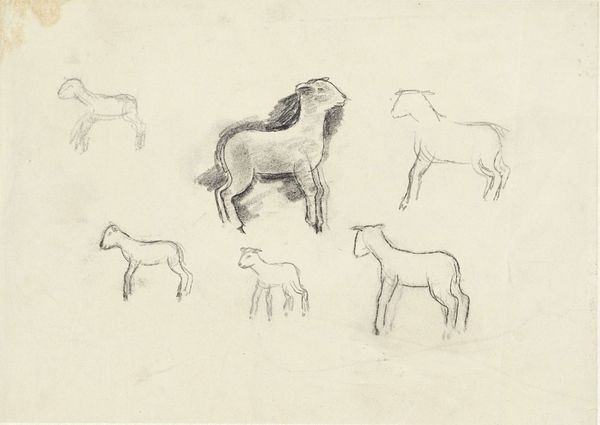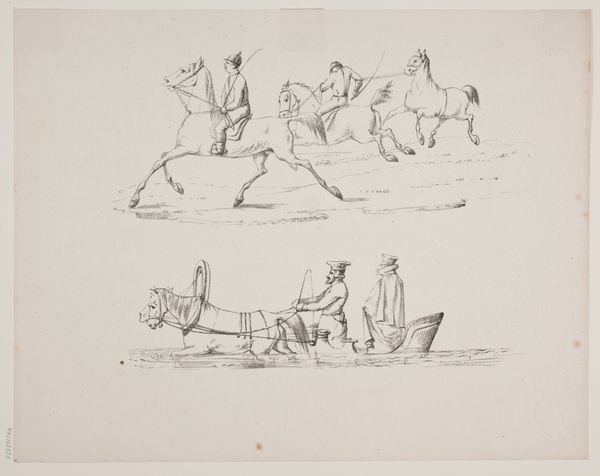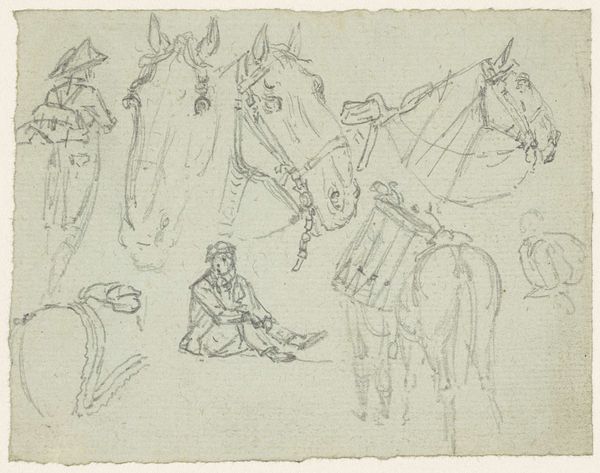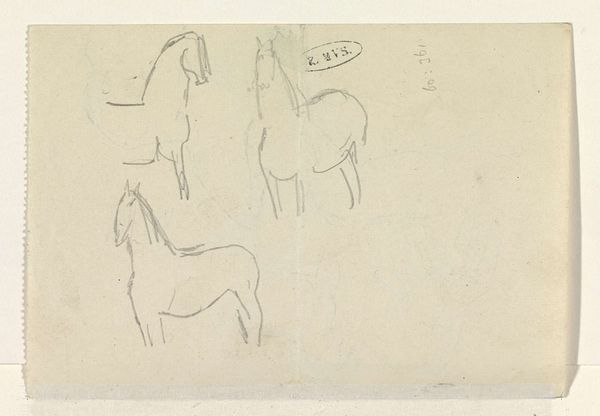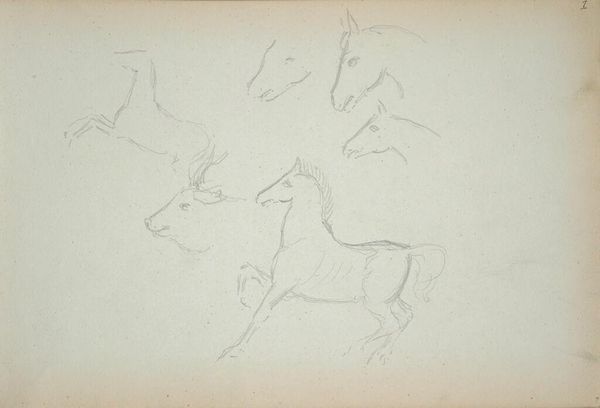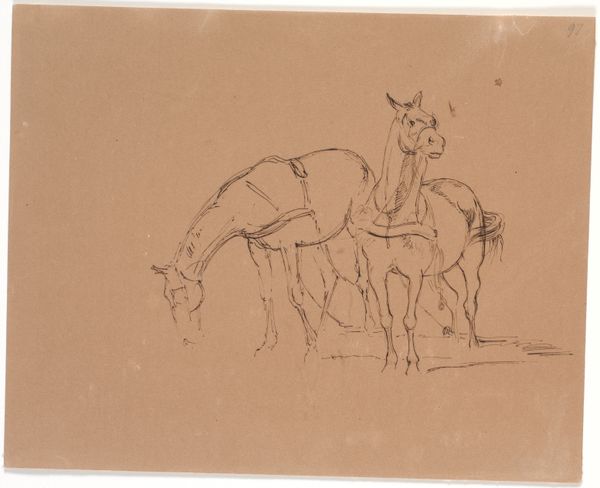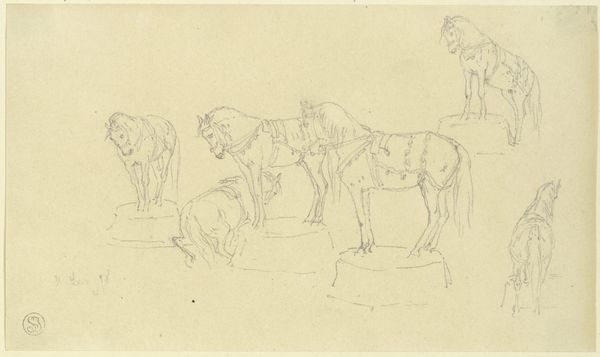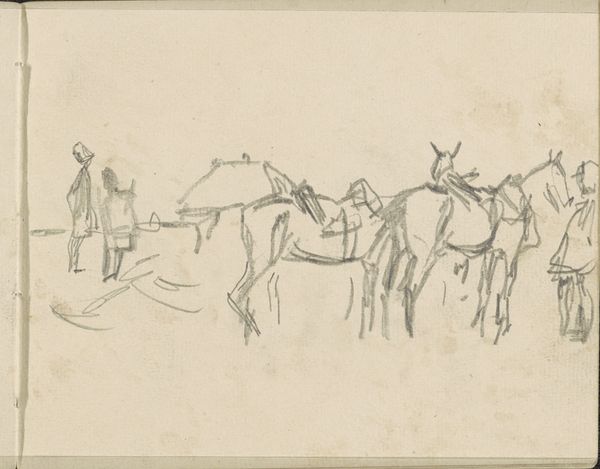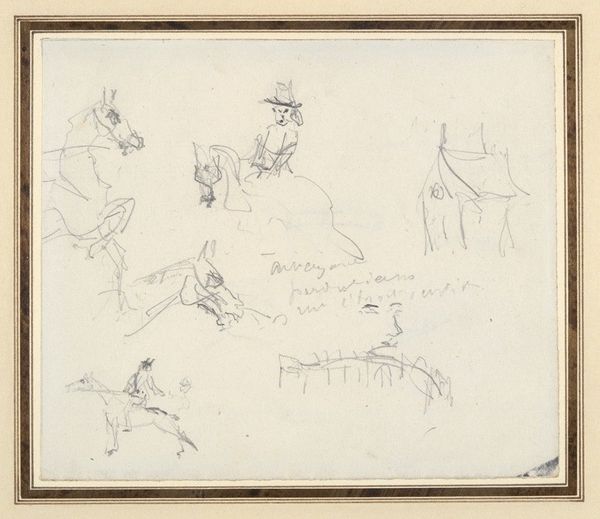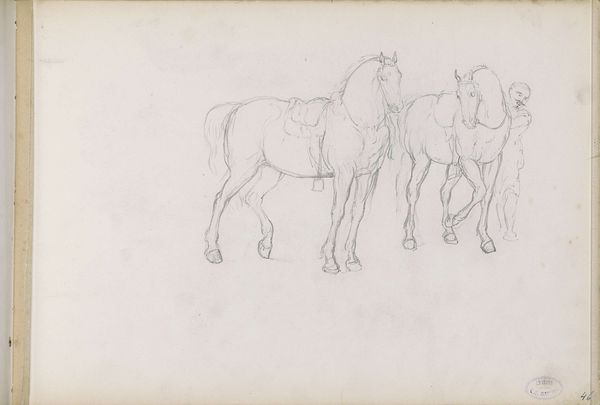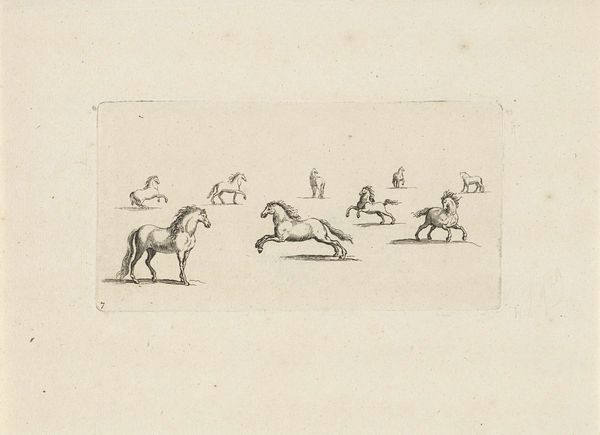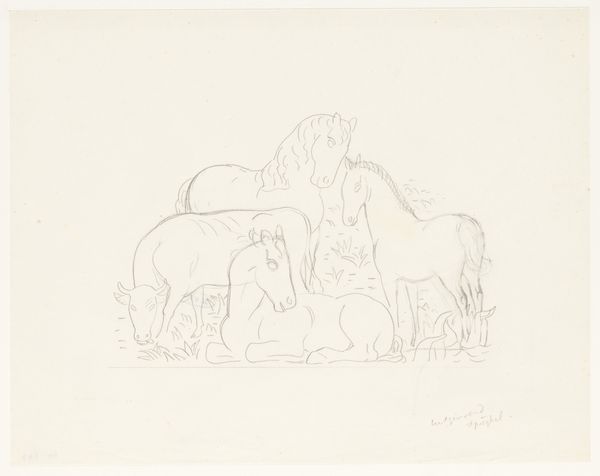
drawing, pencil, charcoal
#
drawing
#
impressionism
#
landscape
#
figuration
#
form
#
pencil
#
horse
#
charcoal
#
realism
Copyright: Rijks Museum: Open Domain
Curator: Looking at this pencil and charcoal drawing from 1873, titled "Horses and a Foal" by George Hendrik Breitner, I’m struck by its immediacy. It feels like a fleeting observation, captured on the spot. Editor: Yes, there is an ephemeral quality to it, but my eyes are drawn to the way he used the materials available to communicate a message to society. The roughness of the sketch lends the work its realness, the starkness and bare quality is not hidden behind flourish, so we as viewers can see a moment captured for what it is in it's basic parts. Curator: Precisely. Breitner, working within the Impressionist and Realist movements, often chose everyday subjects. We know from historical records that he was very interested in representing urban life in Amsterdam, the labor of workers in the city, etc. How do you feel that knowledge interacts with this nature scene of a pack of wild horses and a young foal? Editor: Knowing his social consciousness gives a compelling layer to his seemingly simplistic scene, Breitner probably encountered animals involved in farming as a main labor source often; to portray a labor creature outside that context really shows a perspective on society and nature. What's even more intriguing is that he used readily available pencils and charcoal—tools that could be considered commonplace, for everyday people to make art with--as a form of medium and material. This contrasts with high art, oil paints and fancy brushes; in its own way it's challenging and even elevating an under-classed working creature. Curator: That's an insightful take. Considering the Rijksmuseum is a public space for viewership of art; displaying such artwork that elevates humble materials and the work of a beast like the Horse encourages accessibility to people of all classes to engage with their relationship to nature through visual art. What do you feel he captures emotionally about the animals, despite it not being "fine art"? Editor: I feel like it perfectly embodies the spirit of impressionism. Instead of portraying the creatures with exact realism, every outline sketched perfectly--you still know exactly what the scene is despite its hazy depiction of each object. There's something deeply vulnerable and honest about how, as the audience, we still know how this interaction is a nurturing connection between a group of mothers with their child. It still encapsulates a pure moment that many people can share together. Curator: And ultimately, the image leaves us with something of lasting value – a tender snapshot of the animal kingdom captured with deft strokes. Thank you for providing some incredible insight. Editor: Thank you; this really helped appreciate the simple materials as being capable of great expressions.
Comments
No comments
Be the first to comment and join the conversation on the ultimate creative platform.

